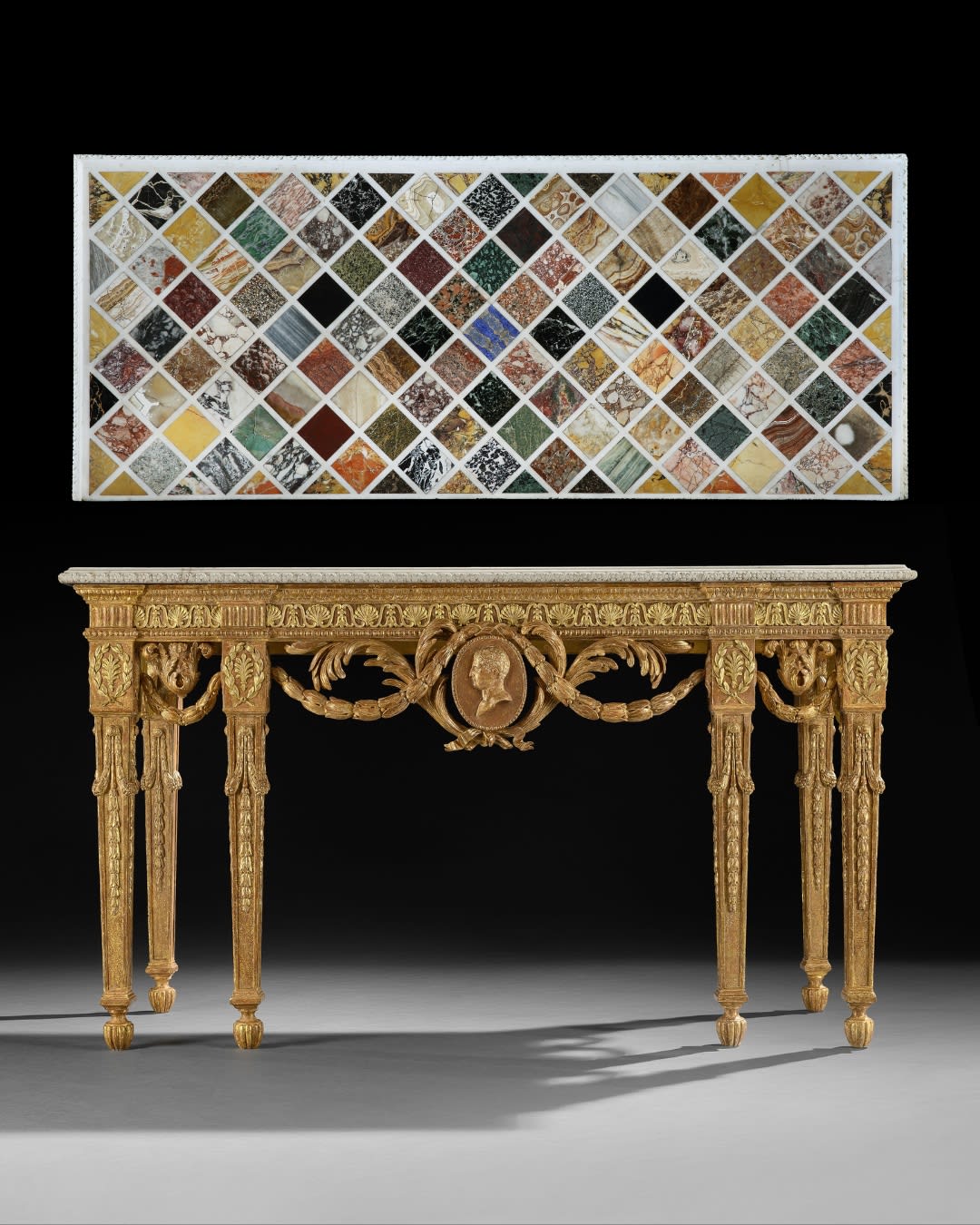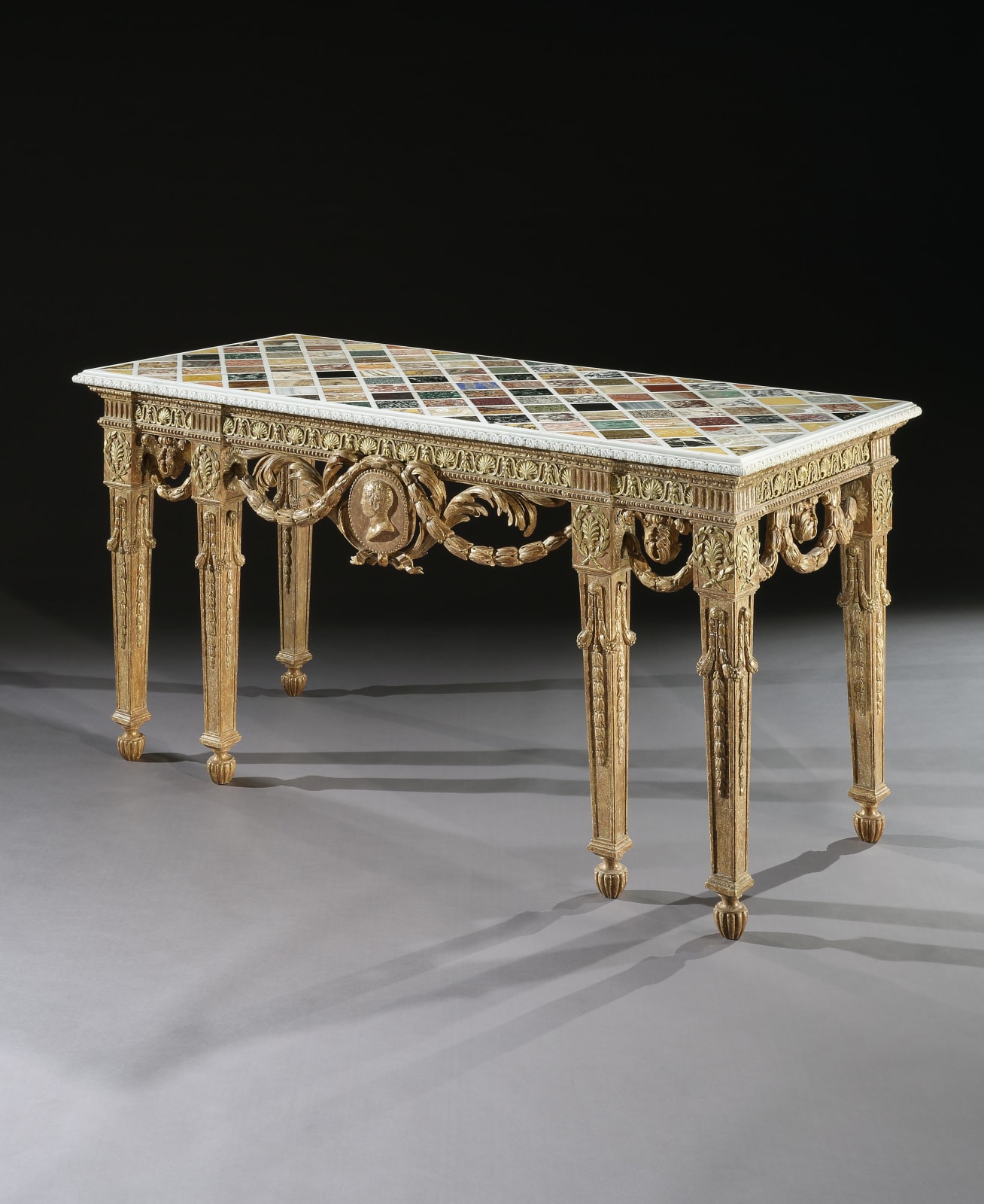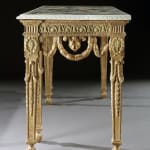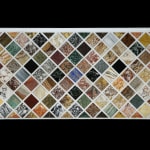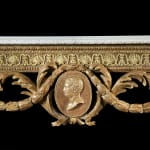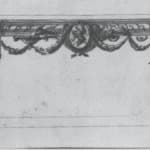
Drawing by John Linnell, Victoria and Albert Museum
THE DAISY FELLOWES SPECIMEN MARBLE TABLE, The specimen marble top: Roman, circa 1750
The giltwood base: English, circa 1765
Width: 5 ft 6 ¾ in; 169.5 cm
Depth: 2 ft 3 ¾ in; 70.5 cm
Further images
A George III giltwood side table by John Linnell with a Roman specimen marble top.
Note: The pendant side carvings and gadrooned toes are of later date.
The giltwood closely follows the two design drawings by John Linnell, dated 1765, which are preserved in the Victoria and Albert Museum, London. As the Linnells never published their designs, the table can therefore be firmly attributed to John Linnell.
Specimen marble tops were the ultimate souvenir from the Grand Tour, an extended educational travel to the antique cities of Europe. Most marble tops, including this one, were produced in Rome from the 1750s onwards to exhibit different types of marble. They were brought back to England and given suitable bases, often giltwood. In this case, the base was designed by John Linnell, with the medallion of Apollo in the centre and draped with laurel leaves. Apollo, god of the arts and intellectual pursuits, was chosen to reflect the education and knowledge of the patron commissioning the table.
Provenance
The Hon. Mrs. Daisy Fellowes, Donnington Grove, Berkshire, England;
Partridge Fine Arts Plc., London, England;
Private collection, New York, USA.
Literature
Helena Hayward and Pat Kirkham, William and John Linnell, Eighteenth Century London Furniture Makers, vol. II, 1980, illus. 209 & 215.
Illustrated:
Christopher Hussey, ‘Donnington Grove, Berkshire, I’, Country Life, 18 December 1958, p. 590, illus. 6.
Country Life, 14 March 2002, illus. 1.
Ronald Phillips, Masterpieces, London 2009, pp. 22/23.
Ronald Phillips, Fine Antique English Furniture, London 2016, pp. 174-176.
